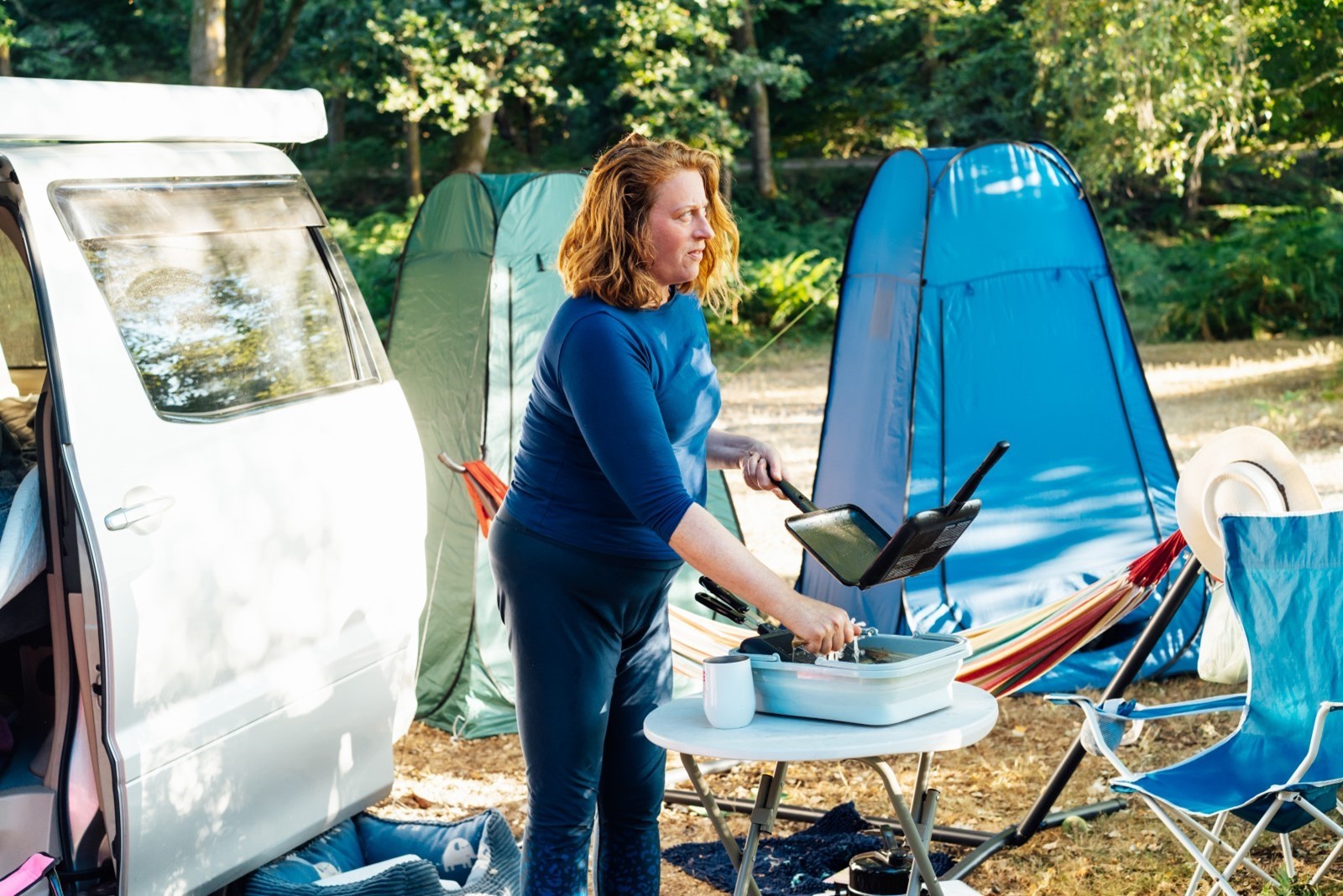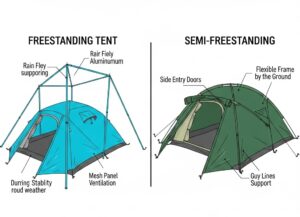Contents
hide
Why Proper Dishwashing is Important While Camping
Preventing Foodborne Illness
Protecting Wildlife
Preserving the Environment
Enhancing Your Camping Experience
Essential Gear for Washing Dishes at Your Campsite
Collapsible Wash Basins
Biodegradable Camp Soap
Scrubbing Tools
- Scrub brush or sponge with a handle for general cleaning
- Pot scraper for removing stubborn food residue
- Steel wool or abrasive pad for tough jobs (use sparingly to avoid damaging cookware)
Microfiber Towels
Strainer or Fine Mesh Bag
Water Storage Container
Optional: Portable Dish Rack
Step-by-Step Guide to Cleaning Dishes While Camping
Step 1: Scrape and Pre-clean
Step 2: Set Up Your Washing Station
Step 3: Fill Your Wash Basins
Step 4: Wash and Scrub
Step 5: Rinse Thoroughly
Step 6: Dry and Store
Step 7: Dispose of Wastewater Properly
Best Practices for Water Conservation When Washing Dishes Outdoors

Use the “One-Pot” Method
Employ the “Wipe-Clean” Technique
Reuse Rinse Water
Heat Water Efficiently
Utilize Natural Cleaning Aids
Eco-Friendly Soap Options for Camping





